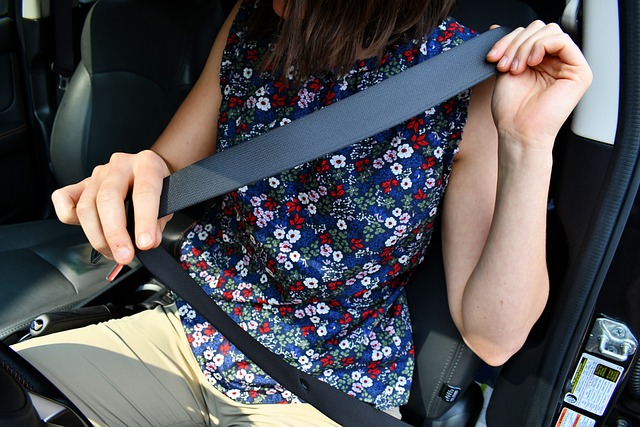
31st January 2023 was the fortieth birthday of a remarkable driving innovation. It marked a revolution in car safety, which in the four decades since its inception has saved many thousands of lives.
Even more remarkable, this wasn’t an incredible technical breakthrough by motor manufacturers. It was a simple change in the law, compelling us to use what was already there.
Yep, the end of last month marked the fortieth anniversary of UK seatbelt regulations. On 31st January 1983, it became illegal for a driver or front seat passenger to travel in the car without belting up. Six years later, that was extended to passengers under 14 in the back seats. And two years after that, in 1991, the law changed to what it should have been in the first place: everyone in the car had to have a belt on.
Things in the rear view mirror may appear ridiculous
And good grief, at the time, what a fuss this all caused. In fact, some of us here are so ancient that we can actually remember it. In 1983, every single pub in the UK had a resident expert who would tell you that seatbelts were incredibly dangerous. He inevitably knew someone who had been ‘thrown clear of the crash’ because they didn’t have their belt on. He also knew someone who’d been trapped by their seatbelt inside a burning car.
From today’s perspective, it all sounds completely daft.
To get more of an insight into 1983 attitudes, this video is well worth 3:19 of your life.
In particular, we love the well-spoken gentleman at 0:35:
Indeed, I’ve never worn it before, I prefer to be free when I’m driving.
And the fabulous bit of logic from the seatbelt-refuser at 2:05:
Well, figures have proved in the continents [sic] that even though the number of seatbelts went up, there’s no decrease in the number of accidents.
It’s a nice illustration of how far we’ll bend facts to avoid doing something we don’t agree with.
So… why the attitude?
The anti-seatbelt guy above was far from alone, and that raises the question of why protesting the legislation was ever a thing. It probably boiled down to three factors:
- A lot of people weren’t used to wearing a belt, and we tend to resist changes to routine.
- Wearing a belt involves a minor restriction or inconvenience.
- The legislation was seen as the govevernment steamrollering individual rights.
The third one is pretty interesting. After all, if you’re only risking your own health, why should the state make you wear a seatbelt? Isn’t it your choice? Are we children that must be protected for our own good?
Well, here’s the thing: actually, not wearing a seatbelt wearing does affect others. For a start off, we have a publicly funded health service, so a severe injury diverts precious resources from other healthcare. The same argument applies to emergency workers, sometimes having to risk themselves for people with avoidable injuries – not to mention the trauma of dealing with these. In addition, seatbelt regulations protect passengers, including those who might be injured by other non-seatbelt wearers.
Overall, it seems a very small decrease in freedom for a huge increase in human wellbeing.
Legislation vs persuasion
What’s also fascinating is the battle that was faced to get this legislation passed. Front seat belts had been mandatory for all new cars since 1968, but it took another 15 years before drivers and front-seat passengers were legally obliged to use them. In that time, successive governments had made 11 attempts to pass seatbelt legislation. 12th time lucky, then!
In the interim, public information films were widely broadcast to try to persuade motorists to use them. The ‘clunk click’ campaign was often hard-hitting and widely broadcast during the 1970s. It’s now been consigned to the dustbin of history due to the involvement of Jimmy Savile. However, given that only four out of ten motorists used their seatbelts before legislation, persuasion alone wasn’t cutting it.
Where are we today?
Given all of the above, you’d think that it’s case closed — surely almost everyone wears their belt when they’re in the car? Unfortunately, a couple of statistics from webuyanycar.com make for depressing reading:
About 7% of road users don’t wear seatbelts. If seatbelts halve the risk of death, this means not wearing one should account for about 15% of road deaths. In actual fact, over a third (34%) of car occupants killed in road crashes are not wearing a seatbelt.
Could that 7% figure be true? Hmm. Further on in their article, they claim that the 1983 legislation has saved an estimated 50 million lives — a downright impossible 1.5 million a year — which perhaps calls their stats research into question.
However, a recent study by National Highways showed levels of compliance that were “disappointing.” Whatever the compliance figure, it does seem that there are still a fair few people around who aren’t belting up.
On the positive side, for most of us, the seatbelt has become as natural to us as putting our shoes on. Forty years on, three cheers for the people who battled to get the law changed.
The WVS blog covers a wide range of automotive topics, from the contentious to the light-hearted. We are an independent garage specialising in the VW group marques, including Audi, Volkswagen, Skoda and SEAT. WVS provides services, repairs and MOTs, delivering a main dealer level of care at affordable prices. To book your vehicle in, or for any enquiries, get in touch.
